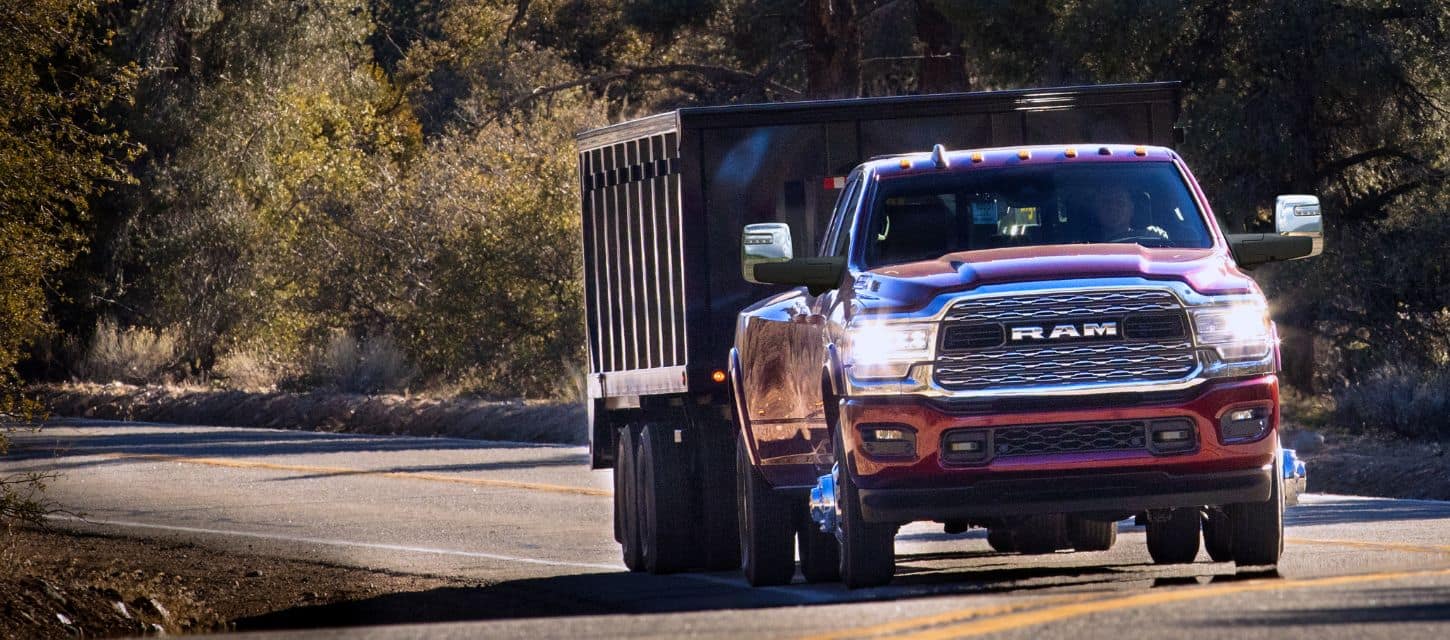BEFORE YOU BUY
Whether you’re new to towing or just have questions, we’ve got you covered. Explore
essential towing topics like the maximum tow ratings of Ram trucks and vans, calculating
towing capacity, payload capacity and more.
2023 NEMPA Best in Class Mid-Size SUV
2023 IIHS TOP SAFETY PICK+
2022 Best Two-Row SUV
2022 IntelliChoice Best Overall Value Winner
2022 IntelliChoice Lowest Cost of Ownership Winner
2022 IntelliChoice Multiple Smart Choice Winner
Most Patriotic Brand for 20 Consecutive Years
LIGHT DUTY
A Ram 1500 might be considered light duty, but it certainly packs a punch while maintaining efficiency. It’s perfect for hauling boats, travel trailers, ATVs or other recreational vehicles.
HEAVY DUTY
Both the Ram 2500 and Ram 3500 are heavy-duty trucks with the power to tackle heavy loads. They can haul things like horses, RVs, sailboats and trailers connected with fifth-wheel or gooseneck hitches.
CALCULATING TOWING CAPACITY
GROSS VEHICLE WEIGHT RATING
GROSS TRAILER WEIGHT RATING
TONGUE WEIGHT
GROSS COMBINED WEIGHT RATING
PAYLOAD VS TOWING
ENGINE AND TRANSMISSION
AXLE RATIO
HITCH RECEIVER TYPES
WHEEL DRIVE SYSTEM
CAB SIZE
BOX LENGTH
HOW DO UPFITS INFLUENCE TOWING?
Upfits allow you to customize your Ram truck or van to add more workspace and versatility for your business needs. When it comes to towing, some upfits feature available built-in rear hitch accessories for easy towing access. Just keep in mind that the weight of the upfit must be subtracted from the total payload of the vehicle to determine remaining payload, available tongue weight and, ultimately, trailer towing capacity.

